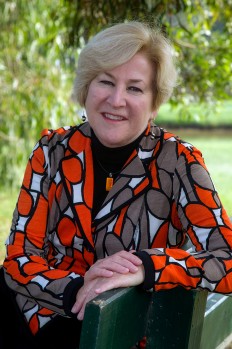
THE mayor of Frankston and five former mayors are blaming the city’s woes on 40 years of broken promises by state politicians.
In a letter to the Premier Denis Napthine and Labor leader Daniel Andrews the mayors vividly describe crime and drug use in Young St and say there is “never any substantial action” no matter which party is in power.
The mayors say $3 million has been wasted on three reports.
The most costly report recommended spending $600,000 developing a “safe and attractive transit interchange”.
Pointedly, the mayors left Frankston MP Geoff Shaw off their mailing list.
The former Liberal now independent has been suspended from parliament until September over the misuse of his government car.
Both the Labor and Liberal parties will hoping to win the marginal seat at the November election.
Christine Richards (mayor in 2010) said it was hoped the leaders of the two major parties would come to Frankston “to start a dialogue with us”.
Other former mayors lining up with the current council leader Darrel Taylor are Colin Hampton (2009), Kristopher Bolam (2011), Brian Cunial (2012) and Sandra Mayer (2013).
The mayors say the key to Frankston’s future lies with “a safe and attractive transit interchange that can accommodate travellers from throughout the Mornington Peninsula”.
The mayor’s say Frankston’s problems with the drug ice are compounded by six pharmacies dispensing heroin substitutes within 500 metres of the railway station.
They say the situation makes it easy for the Health Department but not for “others who use Frankston’s streets for whom the policy does not work – commuters; shoppers; businesses – and the local leaders advocating on their behalf”.
“Unquestionably, drug addicts need to be treated discreetly and humanely. However, at the moment the system is tipped too far in their favour,” the mayors state in their letter to the political leaders, suggesting dispensing pharmacies be a minimum one kilometre apart.
“For 40 years state governments have directed that Frankston’s station precinct be improved. For 40 years, the bureaucrats have not complied. And for 40 years Frankston has languished.”
Ms Richards said one of the three reports – “a secret document” – had been sitting on the desk of Planning Minister Matthew Guy for more than 12 months.
Councillors had been shown the May 2012 report in but were not allowed to keep copies.
Ms Richards said she had been able to obtain the report – Frankston Activities Area Urban Renewal Program Strategy, prepared by Places Victoria for the FAA Project Control Board – for two and a half hours during which time she made 16 pages of notes.
She said the report concluded that the Frankston Activities centre was “socially and economically disadvantaged” and suffered from a “widely held perception” that it was “unsafe and is a poor location to invest”.
The report showed that the government’s $3 million election promise had been spent producing a Structure Plan, the Urban Renewal Program Strategy and the “pathetic” Transit Interchange Masterplan.
Outside of the Bayside shopping centre shop and office vacancies were high and rents low.
The report said Frankston residents were more fearful than other Victorians; earned about 20 per cent less than residents in other activity centres; and endured a crime rate 30 per cent above the state average.
The situation would not change without investment by the state government.
This “investment” to “redress 20 years of socio-economic decline” was set at $46 million in the first five years followed by $108 million over the following decade.
The report estimated the return on investment at more than $1 billion in private sector spending, 7430 jobs, 7420 new residents and 3610 new residential dwellings.
“With correct intervention, Frankston will thrive and take its rightful place as the capital of the Mornington Peninsula, making a significant contribution to the local, metropolitan, and state based economy,” the report stated.
Ms Richards said state government bureaucrats were holding the city back: “A 15 year strategy to renew Frankston’s city centre proves that democracy in Frankston is in tatters. The document has been prepared for a committee of unelected bureaucrats behind closed doors.”
“Decisions are being made by the state in the name of Frankston but it’s not talking to councillors. They’re being ignored by the bureaucrats.
“The greatest impediment to the progress of Frankston is its train station. No policy maker or politician in Frankston could fail to hear it. Yet the development of a safe and attractive transit interchange is presently missing from the draft [report].”
Mr Bolam, in a separate letter to The Times, said the state government’s announcement of $13 million to revamp the Frankston railway precinct “was disappointing”.
“Despite the explicit will of both the Frankston Council and the wider Frankston community to relocate the bus terminus and taxi rank from Young St to Fletcher Rd in order to ease congestion, and to spread the movement of human traffic, the government has instead gone with a cheap and rudimentary funding route.”